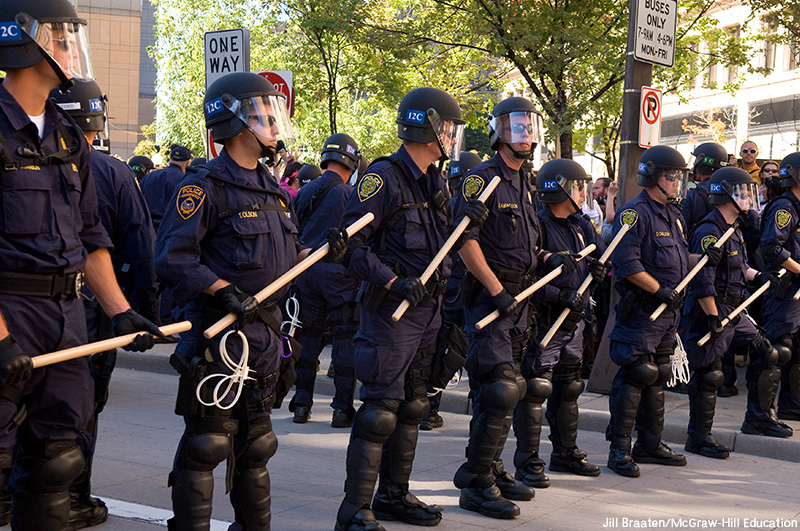
George Floyd’s death in Minneapolis began a wave of protests that have swept the nation for the past month. Public outrage over instances of police violence and racial inequality have led many activists and legislators to call for police reform. But Republicans and Democrats differ on what that reform should look like. Here, btw takes a closer look at proposals being developed in the U.S. Congress.
The Democratic Plan
Congressional Democrats have been busy drafting the Justice in Policing Act, which is a widespread attempt to end police violence and identify racial biases within police departments. It includes mandatory training to end racial and religious profiling and bans no-knock warrants and chokehold/carotid hold restraining techniques.

The Justice in Policing Act also promotes nonviolent crisis training; requires police body and dashboard cameras; creates a Department of Justice task force to investigate instances of police misconduct; and makes lynching a federal crime. In addition, it calls for shifting police funds to programs for improving the health and safety of communities. Congressional Democrats are concerned that the Republican bill doesn’t go far enough. In particular, they argue that no police reform bill is acceptable if it doesn’t deal with the issue of qualified immunity, which provides a legal shield for police officers.
The Republican Plan
Congressional Republicans favor less drastic police reform. Their proposal–nicknamed the “Scott bill” after Republican Senator Tim Scott, who has been leading the discussion–consists of new provisions which penalize police for using no-knock warrants, using chokeholds/carotid holds, or failing to use body cameras. It also calls for creating a national database of police disciplinary records, so that a department will be able to locate troubling discipline patterns in an officer’s history before hiring him or her. Other provisions include requiring the Justice Department to develop de-escalation training; making lynching a federal crime; and creating a Commission on the Social Status of Black Men and Boys, which will examine issues facing boys and men of color.
What is a Chokehold?
A chokehold cuts off the suspect’s air supply, while the carotid hold restricts blood supply to the brain. Both neck restraint techniques can only be used for a few seconds before causing major injury or even death. As a result, they are considered deadly force. Police may use deadly force when an officer is defending his or her own life, or the lives of others. So even though many police departments around the nation have officially banned the practice, it still goes on, and no nationwide ban yet exists.
How Do the Proposals Differ?
The two plans most obviously differ because Democrats favor banning the use of no-knock warrants, using chokeholds and carotid holds, or failing to use body cameras. The Republican Scott bill only places regulations and restrictions upon when such police tactics are considered acceptable. Congressional Republicans say the Democrat’s Justice in Policing Act goes too far, and Congressional Democrats respond by saying that the Scott bill doesn’t go far enough to put an end to these controversial tactics.
